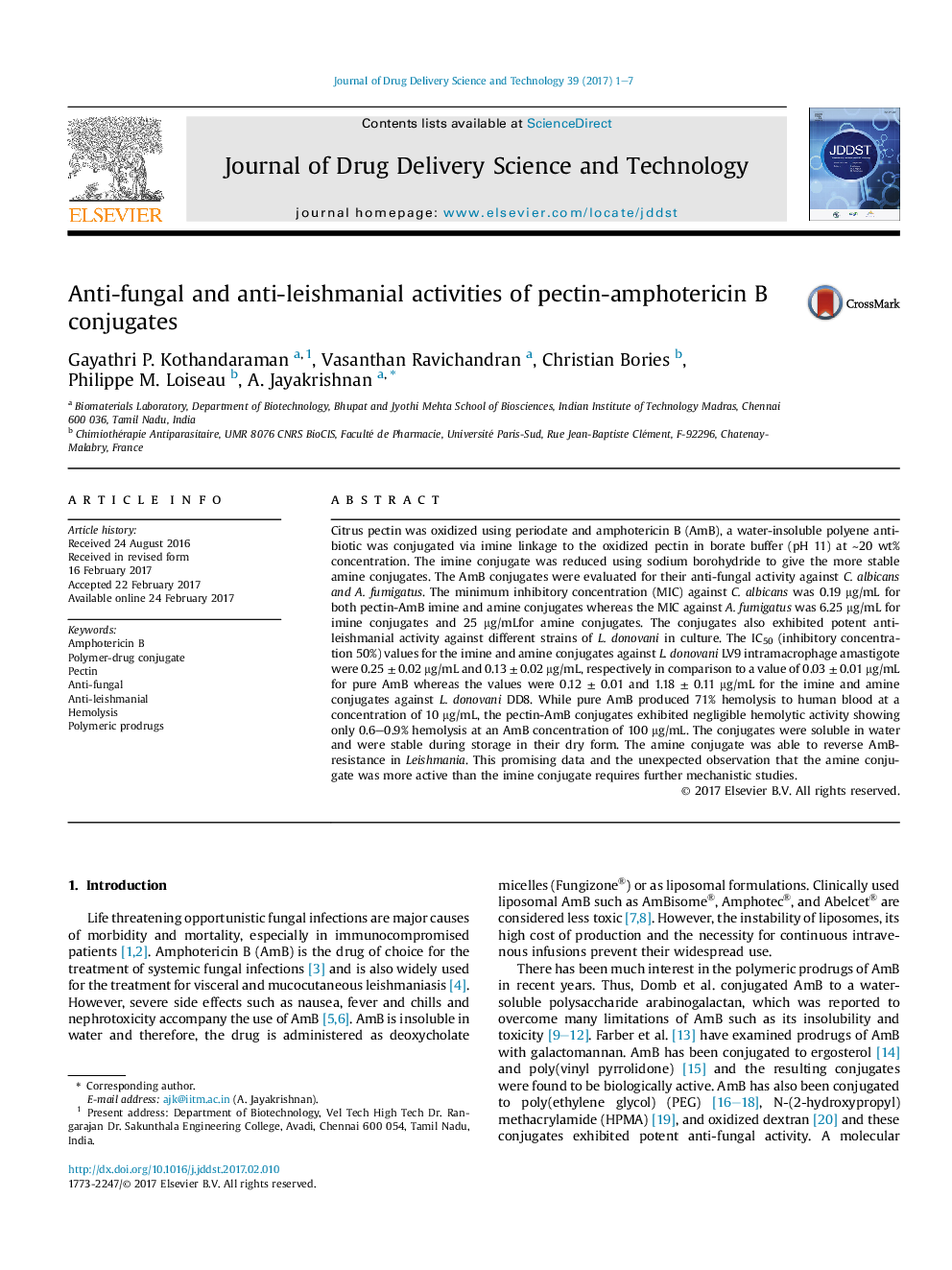| Article ID | Journal | Published Year | Pages | File Type |
|---|---|---|---|---|
| 5548119 | Journal of Drug Delivery Science and Technology | 2017 | 7 Pages |
Citrus pectin was oxidized using periodate and amphotericin B (AmB), a water-insoluble polyene antibiotic was conjugated via imine linkage to the oxidized pectin in borate buffer (pH 11) at â¼20 wt% concentration. The imine conjugate was reduced using sodium borohydride to give the more stable amine conjugates. The AmB conjugates were evaluated for their anti-fungal activity against C. albicans and A. fumigatus. The minimum inhibitory concentration (MIC) against C. albicans was 0.19 μg/mL for both pectin-AmB imine and amine conjugates whereas the MIC against A. fumigatus was 6.25 μg/mL for imine conjugates and 25 μg/mLfor amine conjugates. The conjugates also exhibited potent anti-leishmanial activity against different strains of L. donovani in culture. The IC50 (inhibitory concentration 50%) values for the imine and amine conjugates against L. donovani LV9 intramacrophage amastigote were 0.25 ± 0.02 μg/mL and 0.13 ± 0.02 μg/mL, respectively in comparison to a value of 0.03 ± 0.01 μg/mL for pure AmB whereas the values were 0.12 ± 0.01 and 1.18 ± 0.11 μg/mL for the imine and amine conjugates against L. donovani DD8. While pure AmB produced 71% hemolysis to human blood at a concentration of 10 μg/mL, the pectin-AmB conjugates exhibited negligible hemolytic activity showing only 0.6-0.9% hemolysis at an AmB concentration of 100 μg/mL. The conjugates were soluble in water and were stable during storage in their dry form. The amine conjugate was able to reverse AmB-resistance in Leishmania. This promising data and the unexpected observation that the amine conjugate was more active than the imine conjugate requires further mechanistic studies.
Graphical abstractDownload high-res image (252KB)Download full-size image
